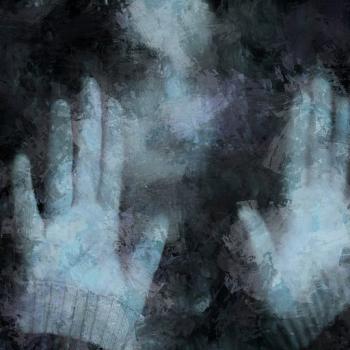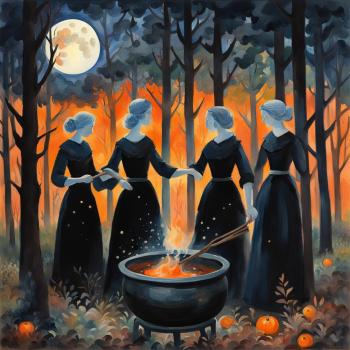It’s fairly safe to say that this week has not been my finest. The loss of a dear friend and a pretty horrendous work situation has left me feeling quite downbeat. To borrow from Winston Churchill, it felt a little bit like “The Black Dog” has been sitting on my lap. Churchill wasn’t the first person in history to liken a strong dose of melancholy or terror to that of a large dark hound. Our history with the black dog is possibly even longer than our history with canines themselves, and it’s fascinating. Our black dog stories can show us a world of magick that we can use to inform our daily practise.
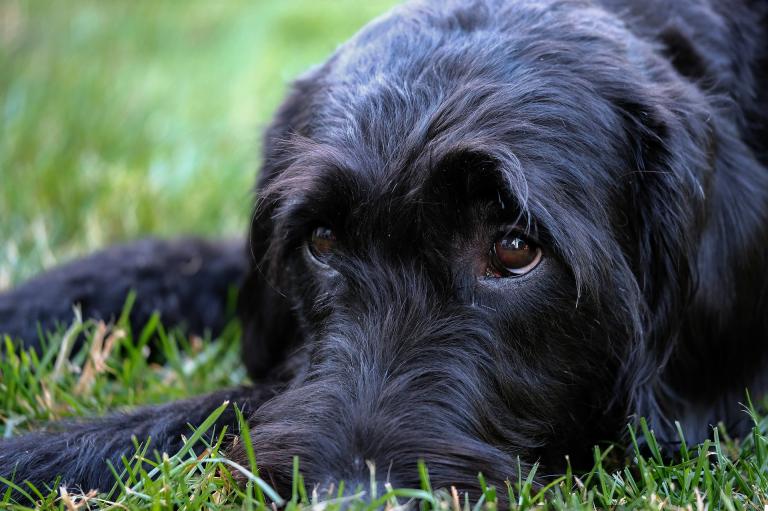
My earliest encounter with a spectral beast was actually a big cat that followed my father and myself home along a deserted lane in North Devon after a night out in the village pub. Although there was some gentle ragging by family and friends about our state of sobriety or potential lack of it, we were mostly believed. Ask any local around and about and there is no doubt that a ‘Beast of Exmoor’ is alive and well. So I wasn’t too shocked when years later, sat at a lonely crossroads in the North of England, I came face to face with a large black dog with flame red eyes.
It was a warm summer’s evening and I was headed home from the village of Formby, the traffic lights had changed to red and being the good law abiding citizen that I am I rolled slowly to a halt. My window was down and I had my radio quietly playing; in no rush to go anywhere fast I let my mind wander. At first I thought the gentle panting I heard was just in my imagination, but as I came out of my daydream I could sense something very large, as large as a Great Dane sat on the road beside me.
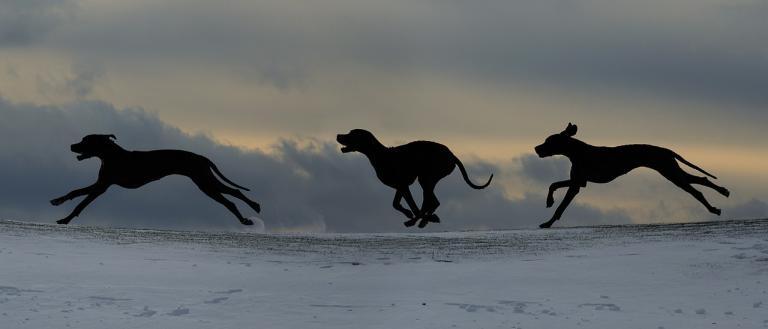
So close that if I had found the courage to reach out my arm from where it rested on the open window ledge I could have stroked its head. I very nearly did just that, for my default position on all things in life is sceptic, so my first thought was that I had encountered a joyful mutt out for an evening jolly having made a break for freedom. But the tell-tale signs of the hairs on the back of my neck standing on end stopped me at the last minute, just as the hound turned to face me revealing its very unnatural eyes. The lights changed and I pulled slowly away so as to not startle the creature, but it decided to follow, running alongside the car for several minutes before disappearing.
This encounter left me fascinated by the concept of Black dogs and Fairy hounds particularly when as with my Feline encounter all those years ago in Devon my research revealed that I had witnessed a well known local phenomenon. It is known as the ‘Ghost Dog’ or ‘Striker’ which is said to have haunted the sand dunes in and around Formby for hundreds of years.
Witnesses have stated that it was a large black hound with eyes that shine in the dark. This wasn’t the only report of spectral hounds in my area either, all across the North West of England there is a dazzling array of beasts with fabulous names, Padfoot (yes really, J.K Rowling knew her stuff), Gyrtrash, Barguest, Striker, Gwyllgi, Black Shuck and Mhoddy Du to name but a few. Each sighting had its own folklore specific to the region but all seemed to have some reoccurring key themes.
1) Black with glowing eyes
2) Harbinger or Omen
3) The avatar of or in league with the Devil
4) The ability to see Spirits
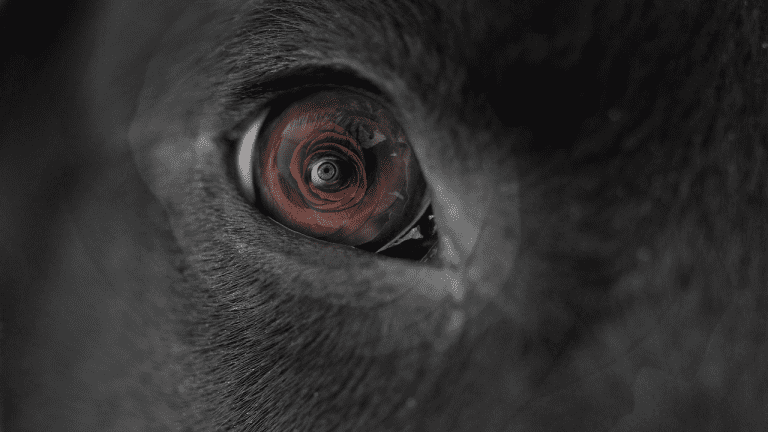
It’s easy to see in these reports possible remnants of long forgotten cautionary tales. Rabies would leave a dog wild, irrational and red eyed, and a single bite would have led to almost certain death. Therefore avoiding creatures with these features would have been very wise, but the fact that these creatures all bore such a similar physical resemblance leads me to think that there is more to it than that.
Many of the hounds are associated with windy nights, remote and lonely locations and the Wild Hunt. So some historians have surmised that this along with their connection with the devil may have been the result of early Christian clerics. Making a place once used for Pagan worship no longer accessible because of a terrifying beast is a pretty good way of knocking out the competition.
We can even reduce the tales of dogs howling before the death of a loved one to simple science. A dog’s sense of smell is acute, so acute we now have dogs trained to sniff out cancerous cells in humans. Death and decay has a particular smell, one that I suspect starts before the soul has even passed and as the body is shutting down. In a time when changes of clothes were few and far between all those who cared for the terminally ill person would have undoubtedly smelt of this sickness and any passing hound would have smelt it.
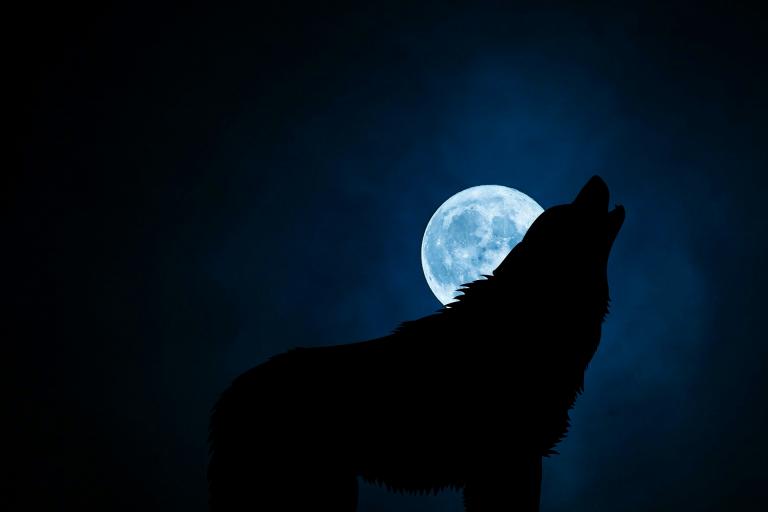
It’s tempting to leave it at that, the fabulous black dog reduced to anthropology and science and sadly that is all that most people do. It fits a comfortable worldview. But further research finds an entirely different dimension to the Black Dog that has been mostly forgotten. Other key features which become more apparent when you cast the research further afield suggests a different beast all together.
1) Apotropaic – having the ability to avert bad luck or evil.
2) Visionary – ability to see things unseen by the naked eye.
3) Curative – the ability to heal or help in cases of illness.
4) Magickal – As familiar spirits and focal points in spellwork.
Once upon a time dogs whining for no good reason were thought to be giving their owners a warning of misfortune, allowing them to potentially avert ill luck. The Mimike Dog, a fairy creature with long shaggy fur found in fanciful Elizabethan bestiaries, was believed to help poor people with their daily tasks. The Grim, believe it or not, was once found only in church yards and was said to protect the building and all consecrated lands. Three hairs taken from a dog that had bitten you, burnt to ash and consumed was said to heal you of any number of ills and is the source of the saying “the hair of the dog that bit you”.
In Turkmenistan babies are not considered to be born innocent, quite the opposite, they are dressed in a shroud-like shift for 40 days after which it is given to a dog to carry off, the act of which removes all the impurities and evil influences. In ancient Greece we saw a similar act with a black dog sometimes acting as a scapegoat, the family ritually touching it so that all impurities were transferred onto the animal before it was driven from the home.
Likenesses of dogs were regularly used in love spells during the same period; they were also believed to sniff out adulterers and to punish those who were unfaithful. The Perro Negro known as Cadejo in Latin America is often considered to be protective, looking after the defenceless, particularly those who are drunk or indisposed somehow. The Egyptian jackal headed god Anubis, like the Grim, was said to preside over the dead, particularly embalming. He also was the keeper of magickal secrets; jackals were often found carved on Egyptian wands so he must have been party to a lot of Magick.
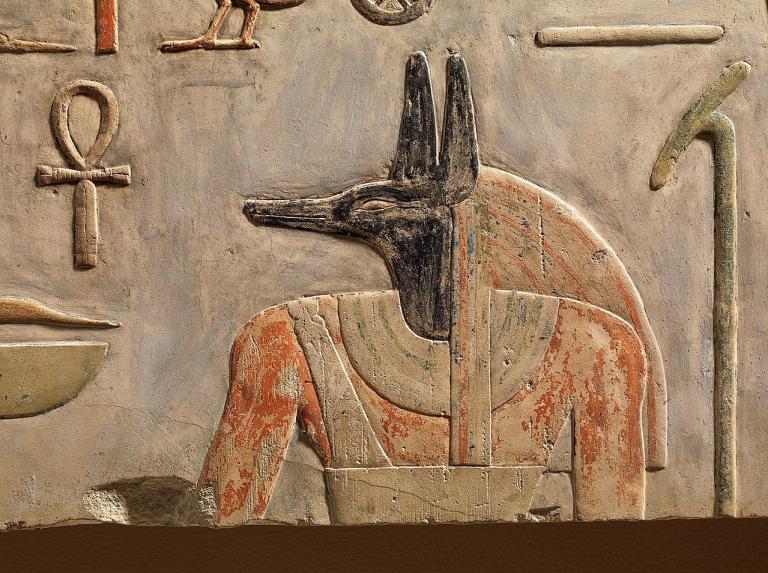
It is very apparent to me that these magickal creatures can have modern day ‘applications’, they can be cultivated, petitioned, invoked and even bribed. Numerous nights contacting and working with the Striker at Formby revealed to me that he is a Watcher. He has the ability to see things that are not obvious. His supernatural eyes pierce through the night and cut through the bull, a task that nobody in generations has asked him to perform so he wanders the highways and by-ways of this seaside resort mostly minding his own business and getting up to mischief. But he is a valuable ally to have, to call upon when events and intentions are not clear and unlike other Fairy creatures his price is not high nor are his intentions obscure. Dogs in this world or the other are quite easily pleased.










